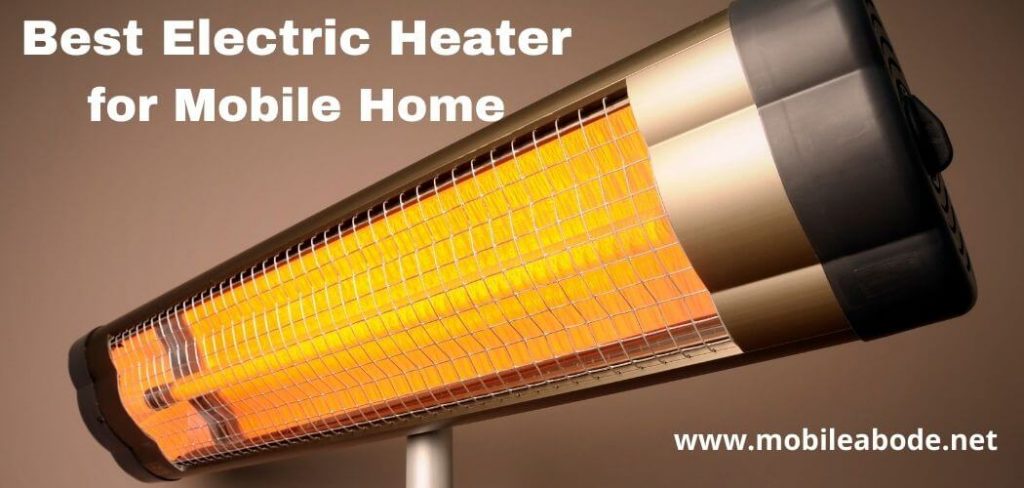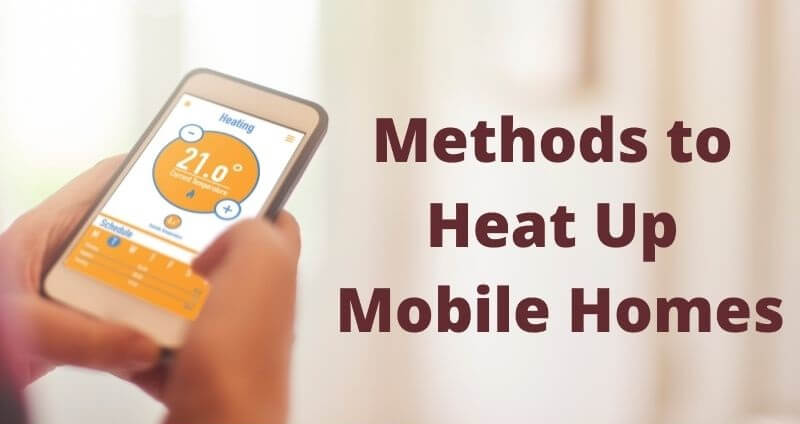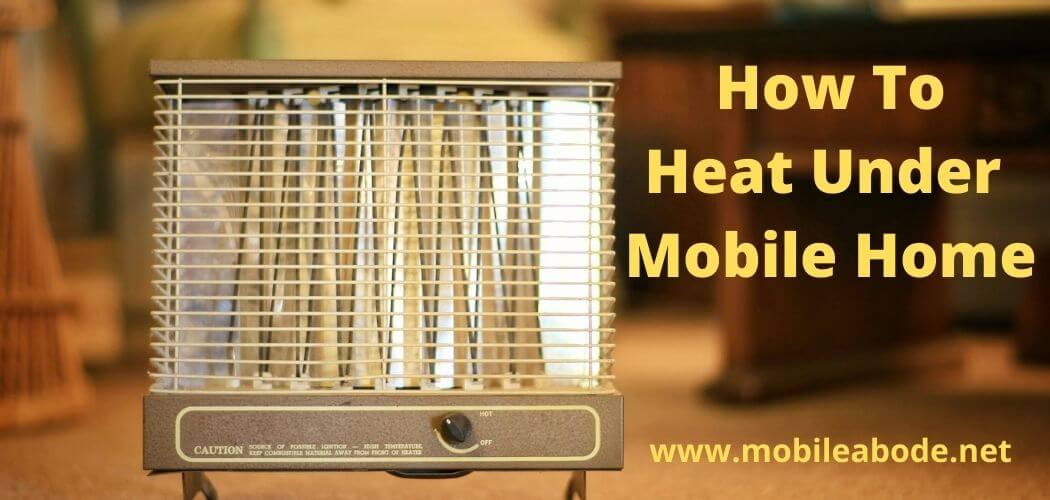Do you ever wonder how to heat under a mobile home?
If so, then this blog post is for you. This article will discuss the pros and cons of heating under a mobile home and outline different methods of doing so.
This article also discusses various factors that must be considered when designing an efficient heating system for your mobile home.
These include cost, efficiency, safety concerns, durability and ease of installation/maintenance. Most importantly, it includes tips on how to get started with installing your own safe and effective heating system in your trailer or camper today!
Let’s get started…
How To Heat Under A Mobile Home?
Mobile homes are built to withstand high wind speeds and heavy snow loads. This means that most mobile homes require significantly less heating than conventional wood frame construction methods.
Keeping this in mind, most people use portable propane or electric heaters with no backup systems.

One advantage of propane is that it emits almost zero moisture,e which can cause mold problems if there are any leaks inside your dwelling.
Electric furnaces will emit some moisture, but they are still better than using nothing at all for heat.
The downside of using these types of heaters is that they are not very efficient, tend to break down often, pose a safety risk when used improperly and do not have automatic shut-offs.
Methods to heat up a mobile home?

Well, there are three different options that I’m aware of. You can use propane, electricity or wood.
Below I will discuss the pros and cons of each method along with some tips on installation/maintenance.
1) Propane Heaters
When using propane to heat your mobile home one thing to consider is the cost involved with running these appliances.
Generally speaking, they are not very efficient when it comes to fuel consumption. This means that you’ll be burning through your supply quicker, which ultimately leads to higher costs for both initial installation and future fuel purchases.
Advantages of propane include ease of installation/maintenance, low risk of fire/explosion, zero moisture emissions and are quiet to operate.
The downside is that propane heaters are not very efficient when it comes to using fuel.
2) Electric Furnaces
Electric furnaces make use of a fan motor that draws air over the heating element, creating warm air to circulate throughout your home.
Both oil and electric furnaces emit some moisture, which can cause mold/mildew if there are any leaks in your trailer.
Advantages of oil or electric furnaces include ease of installation, easy maintenance, do not emit fumes or smoke into your camper’s interior, they are generally safe to use, quiet operation.
The downside is that these appliances are expensive to install initially due to the wiring and they emit some moisture, which can cause mold/mildew if there are any leaks inside your dwelling.
3) Wood Heaters
The final type of heating you might consider is using a wood heater. Wood heaters, also known as ‘wood stoves’ or ‘wood inserts’ are relatively cheap to install and operate.
They do not require electricity, fuel lines or any form of professional installation.
One downside with these appliances is that it’s hard to control the temperature in your home unless you purchase an infrared unit from a higher-end manufacturer such as Vermont Castings.
Another downside is that I would avoid using any wood-burning appliance if you have a propane tank installed on your property due to the risk of a leak or propane/oxygen sensor going off.
Advantages of using wood heaters include the low cost to purchase and install, ease to use, do not emit any moisture if installed properly. Generally, it is safe to use as long as you keep them inside your home.
The downside is that they are not very efficient, so you’ll have to restock your supply regularly resulting in higher costs for both initial installation and future fuel purchases.
Also Read: Mobile Home Water Heater vs Regular Water Heater
FAQs Regarding Mobile Home Heating
Can I put a heater under a mobile home?
Yes, but it is not recommended. Heating with a mobile home heater will cost you more than heating the space in another way, such as using a radiant type of space heating or an actual house furnace.
However, there are some instances where this might be the only option when living in a mobile home.
If you do decide to install one of these heaters under your mobile home, you should make certain that you have a good place to get rid of the waste heat from the unit or pipe it outside.
Making sure that there is adequate ventilation in the space where the heater will be used is a must for a safe installation.
How do you heat pipes under a mobile home?
Pipes under a mobile home are an excellent place to use radiant heat because the radiation is conducted directly into the metal, heating it very quickly.
You can accomplish this by placing electrical tape over about two-thirds of the length of the pipe and then installing an electric heating wire that has been attached to thick paper or cardboard insulation around it.
This will prevent dangerous contact with any electrical current coming from the wires.
How can I make my mobile home floor warm?
Warm floors in a mobile home are easy to achieve with the use of electrical tape, radiant heat tubing or electric heating cable.
Electrical tape is relatively inexpensive and can be wrapped around the bottom of most metal surfaces where you want to bring warmth.
Heating cables work well for this application and is easy to install. Radiant heating tubing is another good option that comes pre-made at many retailers, making it quick and easy to get your space warm quickly.
Radiant heating may take longer than the electrical method but is worth the wait if the color matching system is desired by the client/owner.
Are mobile homes cold in winter?
Mobile homes are not known for being the warmest places in the winter because of their metal construction and lack of insulation. For this reason, most mobile home residents have a supplemental heating system installed to help with keeping the place warm.
If you do find that your mobile home is colder than it should be during the cold winter months, there may be several reasons why this is happening.
The structure may have an inadequate amount of insulation, allowing heat from inside to escape easily through gaps between walls and windows where they come together.
Inadequate ventilation can cause these spaces to become drafty as well, forcing additional heat loss out through cracks around windows and other openings in the structure.
The lower level of insulation also will cause your heat source to have to work harder to maintain the temperature you want.
Conclusion
There are several ways to heat under your mobile home. One is electric furnaces, which is already discussed in more detail.
Another option for people who don’t want to spend money on an electric or propane heater is by using space heaters that can warm up individual rooms at a time when you need them warmed upmost.
You may also choose to invest in insulation and reflective barriers if you live in colder climates where nights are much longer during winter months.
Regardless of what system works best for you, make sure it’s installed correctly so as not to compromise any safety precautions required by law before proceeding with installation!
To maintain a comfortable temperature inside your mobile home, you will need to get the right size heater.
The overall goal here is to get enough heat so that it’s warm during the day, but still cool enough at night so you do not use more than necessary.

